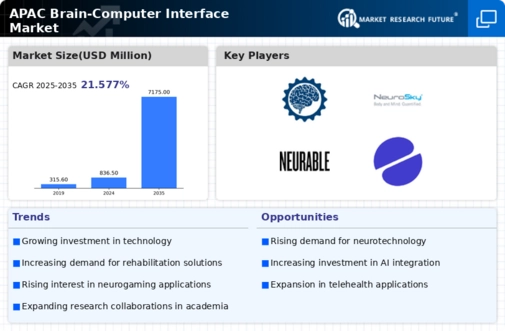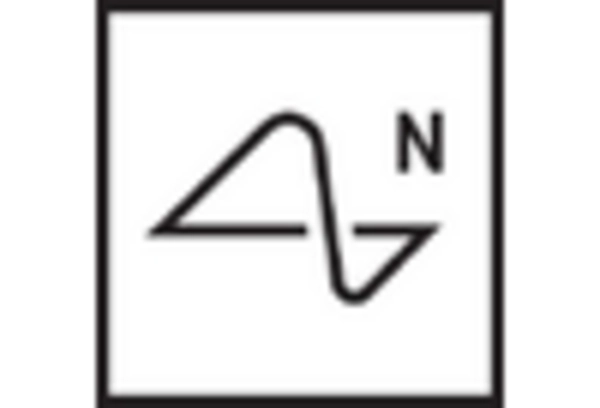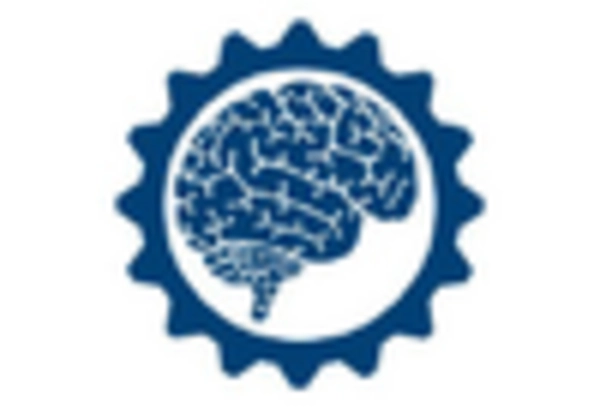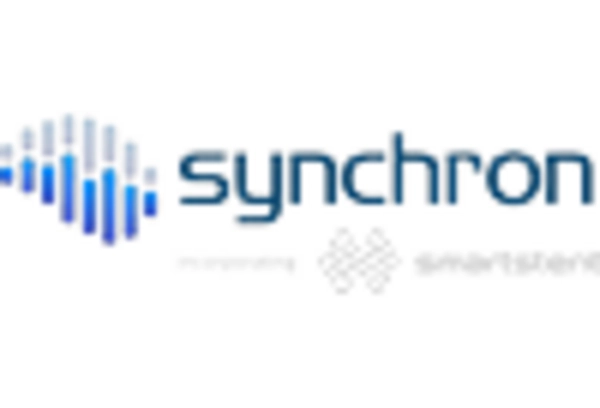Rising Investment in Neurotechnology
The brain computer-interface market is experiencing a surge in investment, driven by both public and private sectors. Governments are increasingly recognizing the potential of neurotechnology to enhance healthcare and education. For instance, funding for research and development in brain-computer interfaces has seen a notable increase, with estimates suggesting that investments could reach $1 billion by 2026. This influx of capital is likely to accelerate innovation and commercialization of brain-computer interfaces, thereby expanding their applications across various sectors. The growing interest from venture capitalists and tech companies further indicates a robust market trajectory. As a result, the brain computer-interface market in APAC is poised for significant growth, potentially transforming how individuals interact with technology and each other.
Advancements in Artificial Intelligence
The integration of artificial intelligence (AI) into the brain computer-interface market is a pivotal driver of growth. AI technologies enhance the functionality and efficiency of brain-computer interfaces, enabling more accurate interpretation of neural signals. This synergy is likely to lead to the development of more sophisticated applications, such as real-time brain activity monitoring and adaptive learning systems. Market analysts suggest that the AI segment within the brain computer-interface market could grow at a CAGR of over 20% in the coming years. As AI continues to evolve, its applications in neurotechnology are expected to expand, potentially revolutionizing user experiences and outcomes in various fields, including gaming, healthcare, and education.
Growing Demand for Assistive Technologies
The brain computer-interface market is witnessing a growing demand for assistive technologies, particularly among individuals with disabilities. As awareness of the capabilities of brain-computer interfaces increases, more consumers are seeking solutions that enhance mobility and communication. This trend is supported by a societal shift towards inclusivity and accessibility, with governments and organizations advocating for the rights of disabled individuals. Market data indicates that the assistive technology segment is expected to grow by approximately 25% by 2027. This demand is likely to drive innovation in the brain computer-interface market, leading to the development of user-friendly devices that cater to diverse needs and preferences.
Increasing Prevalence of Neurological Disorders
The brain computer-interface market is significantly influenced by the rising prevalence of neurological disorders. Conditions such as Parkinson's disease, epilepsy, and stroke are becoming more common, necessitating innovative treatment solutions. According to recent health statistics, the incidence of neurological disorders in the region is projected to increase by approximately 15% over the next decade. This growing patient population is driving demand for advanced therapeutic options, including brain-computer interfaces that can assist in rehabilitation and improve quality of life. The healthcare sector's focus on personalized medicine and technology-driven solutions further supports the expansion of the brain computer-interface market in APAC, as stakeholders seek effective interventions for these challenging conditions.
Collaborations Between Tech Companies and Research Institutions
The brain computer-interface market is benefiting from strategic collaborations between technology companies and research institutions. These partnerships are fostering innovation and accelerating the development of new products and solutions. By combining expertise in neuroscience, engineering, and software development, stakeholders are creating advanced brain-computer interfaces that are more effective and user-friendly. Recent collaborations have resulted in breakthroughs in signal processing and interface design, which are crucial for enhancing user experience. The trend of collaboration is expected to continue, with projections indicating that joint ventures could account for a significant share of the market by 2028. This collaborative approach is likely to drive the brain computer-interface market forward, facilitating the introduction of cutting-edge technologies.


















Leave a Comment